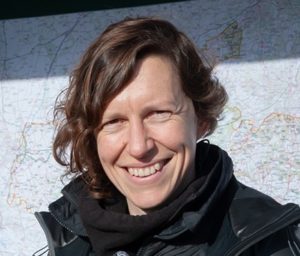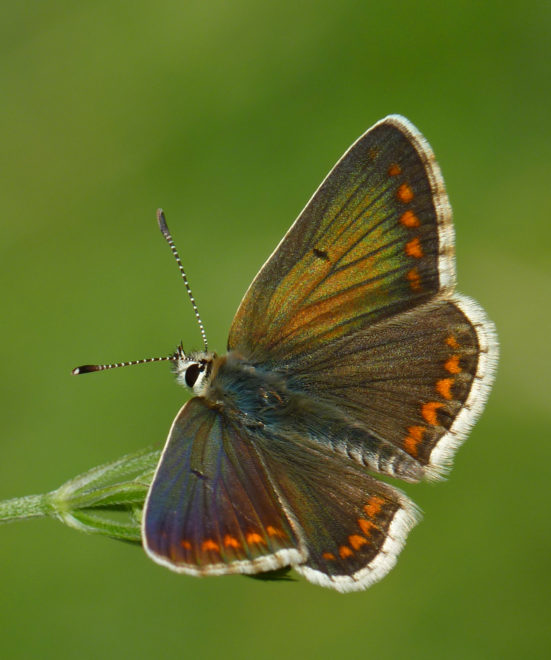A wildlife resurgence!
October 8, 2020
Phillippa Morrison-Price, Lead Ranger for the Eastern Downs, explains how species numbers continue to rise thanks to the community pulling together.

White-letter hairstreak, Adonis blue butterfly, small blue butterfly and a brown Argus – not bad for an area of chalk grassland the size of a small swimming pool.
These are the most recent sightings in a small area near the YHA at Truleigh Hill, West Sussex where the SDNPA and various partners have been working to improve the area for wildlife, as well as visitors. The site as a whole is only one hectare in size – a football pitch! Back in 2012, all that could be found there was a field of nettles, a few trees and an overgrown dew pond, that looked more like a puddle with a willow tree growing out of it.
Over the next few years, with the help of Veolia Environmental Trust, Rampion Mitigation Fund and National Grid, the SDNPA, with countless volunteers, school groups and Duke of Edinburgh participants, set about creating an accessible site that showcased the many habitats of the South Downs, chalk grassland, dew ponds and woodland, as well as their management.
First on the list was getting a digger in to scrape the soil back to chalk. This created a blank canvas for chalk grassland plants to thrive, free from competition from other more vigorous species. Plug planting and seed spreading (all locally sourced) followed, along with weeding and an annual cut and collect (grazing will be introduced once it is established). Next was the pond – digging out the old liner, re-profiling the banks and lining with clay…..then waiting for the rain. Then the dipping platform and easy access trail – providing an opportunity for people of all abilities to access the site, sit by the dew pond, or enjoy the wildflowers. Finally, the whole site was re-fenced, to allow for the re-introduction of sheep…a traditional form of downland management.

Eight years on and the species list is getting longer and more impressive. To date, 14 species of butterfly have been recorded and six species of dragonfly and damselfly, and many young people have also accessed the site and been able to connect with nature.
Right on the South Downs Way, this site is accessible and open to all.
